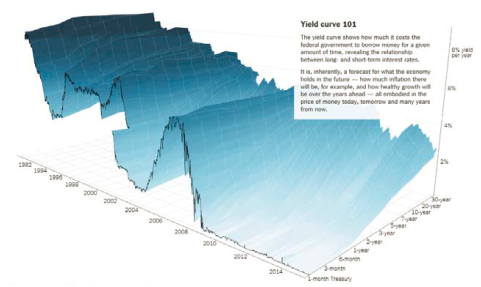In a previous post, Laurent Ferrara, Valérie Mignon, and I examined the nonlinear relationship between employment and output (based on J.Macro (2014)). Using the most recent data, the level of (establishment) employment now matches the output level. Figure 1 shows the actual level, and the predicted level from a nonlinear error correction model that allows short run dynamics to differ between recession and non-recession regimes.
Monthly Archives: March 2015
Oil sands outlook
On Friday I visited the University of Alberta in Edmonton, where falling oil prices have brought a record provincial budget deficit despite aggressive tax increases and spending cuts. Here I pass along some of what I learned about how the plunge in oil prices is affecting Alberta’s oil sands operations.
Continue reading
Estimates of the Elasticity of Employment with Respect to the Minimum Wage
Some people would have you believe the impact of a minimum wage hike on employment is known to be large and negative. A cursory acquaintance with the literature helps in immunizing one (if one believes in vaccines and the like) against falling for such assertions.
Pompeii on SF Bay?
Will a minimum wage increase induce an apocalyptic conflagration of small businesses and low wage employment? Here’s one prediction:
This is not the time to force businesses to raise prices by laying-off employees in order to stay in business.
What good is raising the minimum wage if prices go up? What good is raising the minimum wage if there are no jobs available?
Businesses will be forced to raise prices in order to absorb a 26% pay increase. Restaurants will be especially hard hit.
Guest Contribution: “Currency politics: Understanding the euro”
Today, we’re fortunate to have a guest contribution by Jeffry Frieden, Stanfield Professor of International Peace at Harvard University, and author of the newly published Currency Politics: The Political Economy of Exchange Rate Policy (Princeton University Press, 2015). This post is based upon a portion of that book.
Fed moves the markets
As widely expected, at Wednesday’s FOMC meeting the Federal Reserve dropped its statement that “the Committee judges that it can be patient in beginning to normalize the stance of monetary policy”, the magic formula that many observers had thought would open the way for a hike in interest rates at the Fed’s June meeting. But the yield on a 10-year U.S. Treasury bond dropped 10 basis points immediately following the FOMC release.
Continue reading
Guest Contribution: “Currency politics, debt politics”
Today, we’re fortunate to have a guest contribution by Jeffry Frieden, Stanfield Professor of International Peace at Harvard University, and author of the newly published Currency Politics: The Political Economy of Exchange Rate Policy (Princeton University Press, 2015). This post is based upon a portion of that book.
The Yield Curve and Economic Activity, Again
The New York Times has an article in The Upshot today, which shows the yield curve over time in a nifty map. They also show the topography for yields in Germany and Japan.
“Wisconsin job creation rank falls to 38th in U.S.”
That’s the title of an article by John Schmid and Kevin Crowe in the Milwaukee Journal Sentinel today, based upon just-released state level data on the Quarterly Census of Employment and Wages (QCEW):
Wisconsin gained 27,491 private-sector jobs in the 12 months from September 2013 through September 2014, a 1.16% increase that ties Wisconsin with Vermont and Iowa at a rank of 38th among the 50 states in the pace of job creation during that period.
Short Term Implications of the House Budget
The CBO took at face value the revenue and spending levels in the House Budget, FY2016, and assessed the impact on GNP per capita (remember, this is not a score, as there are few details on specific provisions to hit the targets). The impact is shown in Figure 2 from the CBO.
